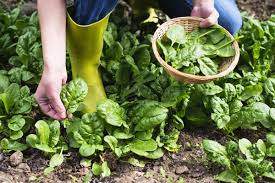: Spinach is a widely grown leafy vegetable that is packed with essential nutrients and vitamins, making it a popular choice for farmers and consumers alike. In this article, we will explore the benefits of spinach in agriculture, its growth requirements, and how to manage common pests and diseases that affect spinach crops.
Spinach (Spinacia oleracea) is a nutritious vegetable that is rich in vitamins A, C, K, and minerals such as iron, calcium, and potassium. It is a cool-season crop that grows best in well-drained soil with a pH between 6.0 and 7.5. Spinach can be grown from seed or transplants and is typically sown directly in the field. To maximize yields, farmers should ensure that the crop is well irrigated, fertilized, and free from pests and diseases.
One of the most significant challenges that farmers face when growing spinach is pest management. Common spinach pests include aphids, leaf miners, and spider mites, while diseases such as downy mildew and fusarium wilt can also affect crop yields. Farmers can use a variety of methods to manage pests and diseases, including crop rotation, the use of pest-resistant varieties, and the application of natural and synthetic pesticides.
In conclusion, spinach is a valuable crop that offers a range of health benefits and is relatively easy to grow, making it an ideal choice for farmers. However, to ensure maximum yields and profitability, farmers must pay close attention to crop management and pest control.
Tags: Spinach, agriculture, crop management, pest control, nutrients, farming, pesticides, crop rotation, downy mildew, fusarium wilt.












